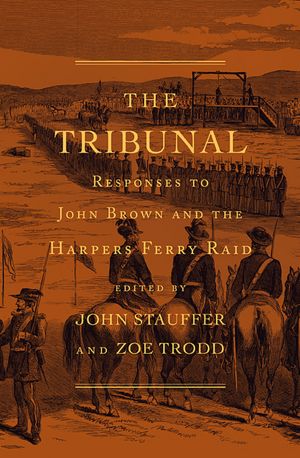It is long past time for historians to abandon the expectation that historical films will be historically accurate down to their most minute detail. Achieving this kind of authenticity is not the filmmaker’s goal. Rather, the filmmaker’s goal is to create a sense of historical realism (enough period detail in clothing, hairstyles, and figures of speech to be credible) in the service of a compelling story. And this is much harder to pull off than it may seem. The challenges of shaping an entertaining and visually gripping film about a complex moment in American history are quite evident in Steven Spielberg’s new film “Lincoln.”
There are many awkward moments in “Lincoln,” most of them occurring when Spielberg attempts to integrate the voices of slaves, freed slaves, and free blacks into a movie that is really about the white men who decided their fates. The first five minutes of the film are particularly cringe inducing; Lincoln (Daniel Day-Lewis) sits on a table in the Army of the Potomac’s camp, listening to two black soldiers and two white soldiers voice their love of and disappointment in him. They chat for a bit and then one of the white soldiers (Dane DeHaan) begins quoting the Gettysburg Address word-for-word, gazing at Lincoln with adoring eyes. When he is called away to his regiment a black soldier (David Oyelowo) finishes the speech, using the president’s own words to critique his policies. It is a strange way to begin the movie; these four men seem to voice the different popular and scholarly assessments of Lincoln over time: the Great Emancipator, the Pragmatic Racist, the Beloved Leader, and the Eloquent Voice of the Nation. It is filmed and acted in a theatrical style that makes you very aware of the playwright Tony Kushner’s authorship of the screenplay. There are other moments of interracial interaction that are similarly stilted and overdramatic. When African Americans file into the balconies to witness the vote on the 13th amendment, for example, John Williams’ musical score swells and the politicians turn to stare. A Radical Republican intones, “Welcome to your house.” It is supposed to be a dramatic high point but instead it makes you want to laugh.
There are enjoyable elements of the film: repellent and amusing characters, delightfully colorful insults hurled across the floor of the House of Representatives, and some truly awful wigs (this latter detail is how you know the film is “historical”). And it is not that the potential for a riveting drama does not exist. Just think about the plethora of legal and political thrillers that jam bookstore shelves and dominate primetime lineups. The wartime Congressional battle over the Thirteenth Amendment has a strong narrative arc. Debates over timing of the proposal, the determination that 20 votes must be had, the efforts to secure those votes (by whatever means necessary), and the final roll call: all of this makes for a great story. The film moves back and forth between the vote and Lincoln in the White House, reading with Tad; this intercutting creates some nice dramatic tension. When the celebrations begin on the floor of the House and in the galleries, we feel the weight of that moment. It might make you yearn for such times in our own political culture, when politicians could reach for—and achieve—something higher.
The problem is that Spielberg takes on too much in “Lincoln”; he tries to tell every single story of the last months of the Civil War. The film is simultaneously a biography of Lincoln and an examination of his family dynamics, a political history of the amendment vote and peace negotiations with Confederates, and—very briefly—a war movie that depicts the nastiness of battles and their aftermath. The last five minutes of the film are just as awkward as the first, as it moves quickly through the final moments of April 14-15, 1865, and then flashes back to the Second Inaugural. Anyone not well versed in the history of the Civil War era will likely whisper to his neighbor, “Who was—?” “What was the—?” “Wait—what?”
Where the film succeeds most is in its portrait of Lincoln. The president is a vivid and spellbinding leader, a (by turns) doting and dismissive father, a loving but exasperated husband, and an overburdened man trying to do the right thing. Spielberg lingers on Lincoln’s face—the most distinctive visage in presidential and perhaps in all of American history. You wonder (somewhat cynically) if he does this because Day-Lewis’ transformation is so remarkable and he wants you to marvel at it, over and over again. However, Walt Whitman famously remarked of Lincoln’s face that “of technical beauty it had nothing—but to the eye of a great artist it furnished a rare study, a feast and fascination.” And when Day-Lewis’ Lincoln tells jokes to a room full of telegraphers or relates seemingly random stories to his cabinet members, Spielberg’s tight focus on his expressive mouth and his eyes—which snap with humor, cunning, and sadness—really works. We understand in these moments how Civil War Americans might have responded to Lincoln: he was a man who made you want to be worthy of his regard.
Given this lavish attention to Lincoln’s face, it is interesting that both the opening scene and what should have been the final scene show us Lincoln’s back. In the latter scene, Lincoln’s valet William Slade (Stephen Henderson) watches him walk slowly down the hall, on his way to join Mary (Sally Field) at Ford’s Theater. It is an extended scene, and effective. And it seems to suggest that in the end, Lincoln—whom many historians agree was the best president the United States has ever had—cannot, in fact, be fully known. He walks away, down the dark hall, just out of our reach.
Megan Kate Nelson (Lecturer in History and Literature, Harvard University) is the author of Ruin Nation: Destruction and the American Civil War (2012).





